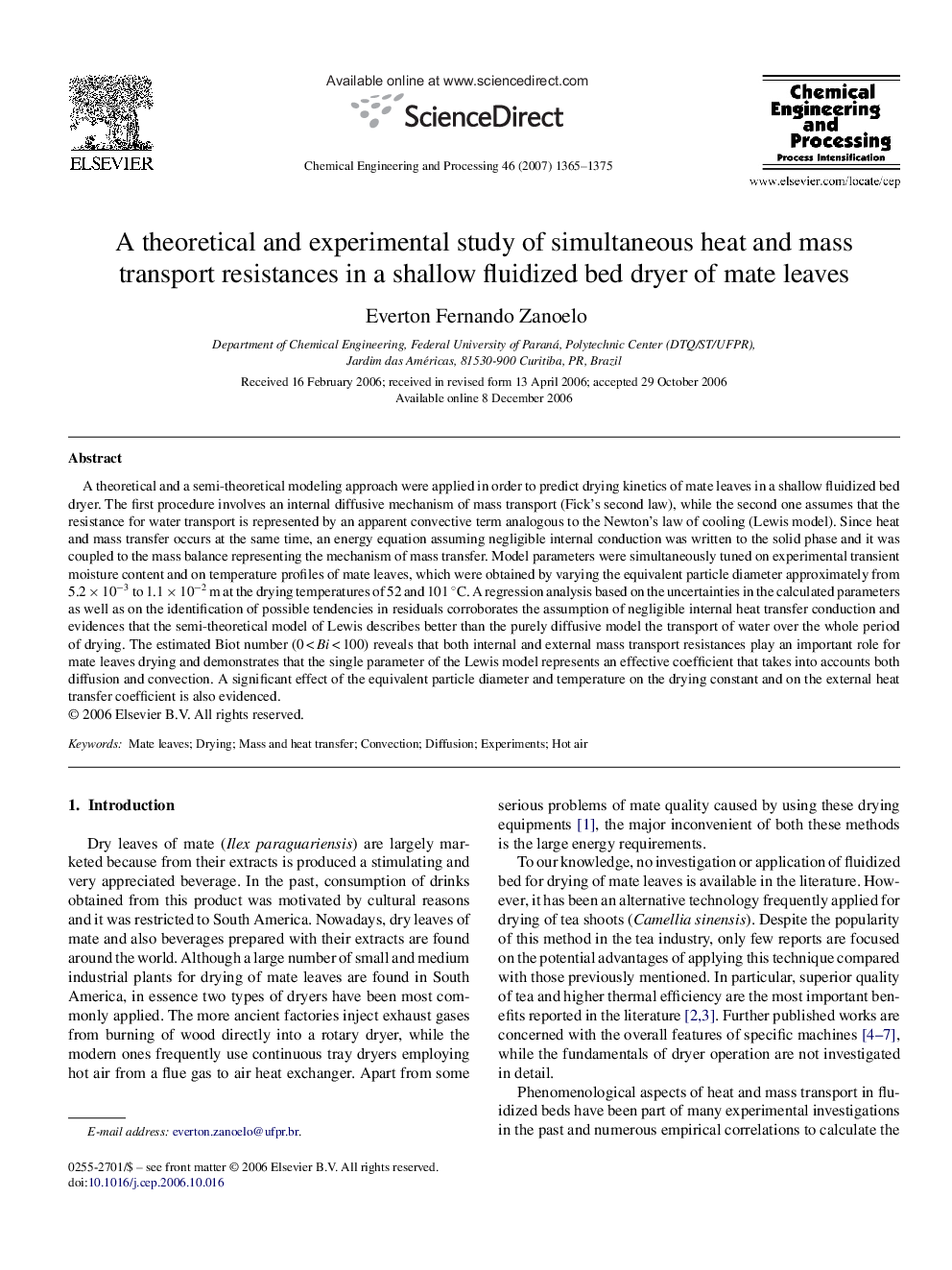| Article ID | Journal | Published Year | Pages | File Type |
|---|---|---|---|---|
| 688235 | Chemical Engineering and Processing: Process Intensification | 2007 | 11 Pages |
A theoretical and a semi-theoretical modeling approach were applied in order to predict drying kinetics of mate leaves in a shallow fluidized bed dryer. The first procedure involves an internal diffusive mechanism of mass transport (Fick's second law), while the second one assumes that the resistance for water transport is represented by an apparent convective term analogous to the Newton's law of cooling (Lewis model). Since heat and mass transfer occurs at the same time, an energy equation assuming negligible internal conduction was written to the solid phase and it was coupled to the mass balance representing the mechanism of mass transfer. Model parameters were simultaneously tuned on experimental transient moisture content and on temperature profiles of mate leaves, which were obtained by varying the equivalent particle diameter approximately from 5.2 × 10−3 to 1.1 × 10−2 m at the drying temperatures of 52 and 101 °C. A regression analysis based on the uncertainties in the calculated parameters as well as on the identification of possible tendencies in residuals corroborates the assumption of negligible internal heat transfer conduction and evidences that the semi-theoretical model of Lewis describes better than the purely diffusive model the transport of water over the whole period of drying. The estimated Biot number (0 < Bi < 100) reveals that both internal and external mass transport resistances play an important role for mate leaves drying and demonstrates that the single parameter of the Lewis model represents an effective coefficient that takes into accounts both diffusion and convection. A significant effect of the equivalent particle diameter and temperature on the drying constant and on the external heat transfer coefficient is also evidenced.
